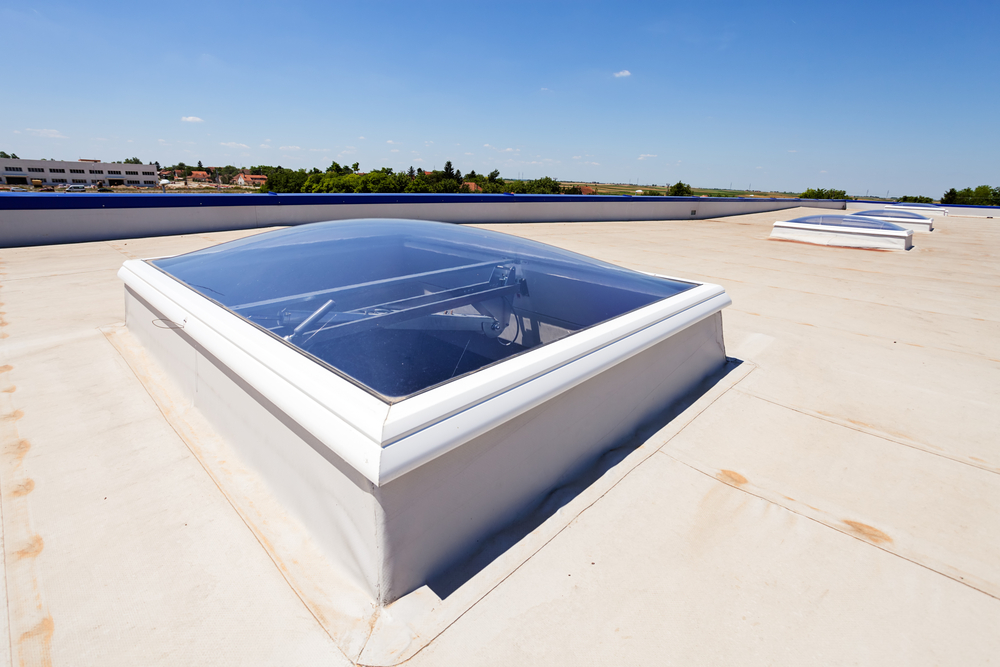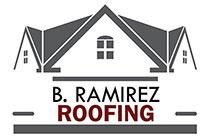Commercial and residential roofing systems share the same primary function (which is to protect your property from the elements), but the similarities end there. The biggest difference between residential and commercial roofing is the slope of the roof itself, which is determined by the size of the building. Because residential properties are smaller, they will typically have a roof with a steeper slope — one that is visible from the ground and uses materials like architectural tile, asphalt shingles, and slate. Commercial buildings will be larger, so they tend to have flat or low-sloped roofs that won’t be visible from the ground. Commercial roofs can be made out of a variety of materials, depending on the structure of the building as well as other factors (such as climate, intense heat, extreme cold, or whether the surface needs to hold up to a great deal of foot traffic).

Every kind of commercial roof will have their own set of pros and cons. Because there are so many options to choose from, it can be hard to make a final decision. Here are some of the more common options for commercial roofing and what they’re best suited for.
#1: Metal Roofing
Metal is a popular material for commercial roofs because it has a lifespan of 40-50 years. There are several types of metal roofing systems, and some of them even come with integrated solar panels. Some of the common materials used for metal roofing include:
• Corrugated galvanized steel
• Aluminum
• Zinc
• Tin
• Tile sheets
• Copper
• Coated or stainless steel
Metal roofs can have an attractive and finished look while giving you a strong fire resistance rating. They’re also stronger and more sustainable than many other commercial roofing options, but there’s one downside. Metal is more susceptible to corrosion, which is why modern metal roofs are treated with a series of protective surface layers that can reduce the risk of damage from exposure, moisture, pollution, and other environmental factors.
#2: Built-Up Roofing Membrane
If you take care of it, built-up roofing will have a lifespan of 20 years or more and is one of the oldest roofing types. It’s made out of alternating layers of tar and gravel, with the number of layers affecting its durability as well as the installation cost. This kind of seamless roofing will hold up well to foot traffic, but it will depend on how well the understructure can carry the weight and vibrations of movement. It’s even UV-resistant and can be coated to reflect heat. The problem with built-up roofing is that it has a short lifespan. It can also be hard to find the source of a leak as the roof ages.
#3: Thermoset EPDM Membrane
Ethylene Propylene Diene Terpolymer (EPDM) is a roll-based roofing membrane that’s made of a durable synthetic rubber. Also called “Thermoset roofing,” an EPDM roofing system can offer a great deal of resistance to sunlight and pollution. It’s also long-lasting, versatile, and easy to install.
EPDM can come in both black and white rolls. In addition to its resistance to sun and air pollution, this single-ply rubber can withstand the effects of many common solvents (such as alcohol or acid). The problem with EPDM is that it’s not the most aesthetically pleasing option on the market, and it’s more prone to punctures.
#4: Thermoplastic PVC and TPO Roofing Membrane
Thermoplastic Polyolefin (TPO) and Poly Vinyl Chloride (PVC) commercial roofing systems are resistant to a variety of adverse conditions, which can include:
• UV light
• Chemicals (including fats and oils)
• Bacterial growth
They’re also lightweight, can reflect heat, and are resistant to punctures. Other benefits of TPO and PVC include:
• Strong air-welded seams
• Resistance to fire
• Can withstand high temperatures and strong winds
There are some downsides of which you should be aware. Watch out for cheap products that are poorly made. Because the popularity of these products has increased over the years, many small manufacturers have tried to make their own line of thermoplastic products. Make sure you get it from a reputable manufacturer.
#5: Shingle Roofing
Shingles are commonly used on residential properties, but they’re also used on commercial properties — typically on ones with steep roof lines. Shingles can be made out of a variety of materials, which can include, but may not be limited to:
• Asphalt
• Architectural
• Slate
• Plastic
• Ceramic
Their installation is relatively simple, are affordable, and have a great deal of versatility. The downside, however, is that their lifespan isn’t as long as some of the other commercial roofing materials. Shingles are also more susceptible to damage from mildew and moss (especially if your building is located in a shaded area).
If your building needs a new roof or are thinking about the different types of commercial roofing products for a new build, think about what might be right for you. If you’re looking for one of the best places for commercial roofing in Corpus Christi, be sure to get in touch with B. Ramirez Roofing.
